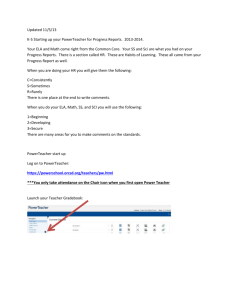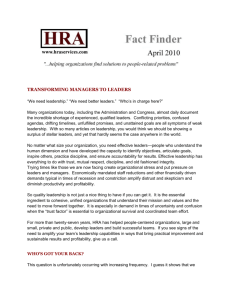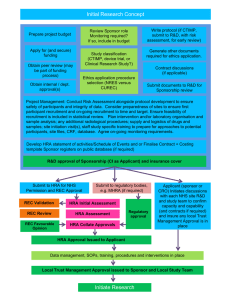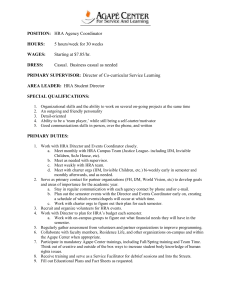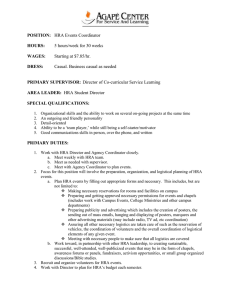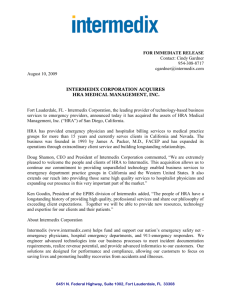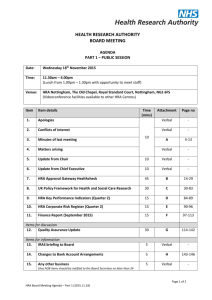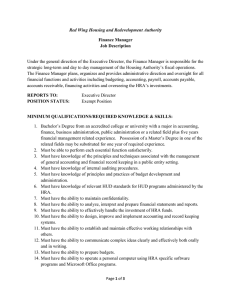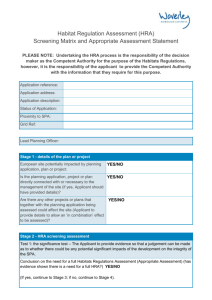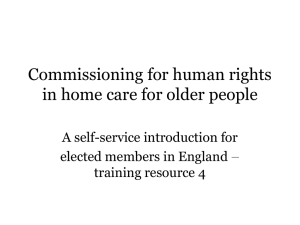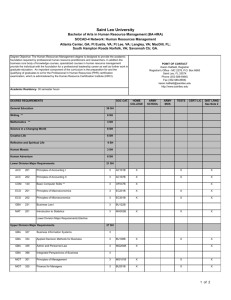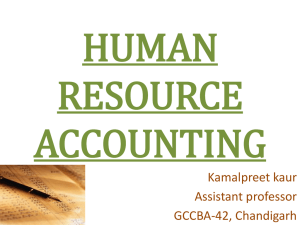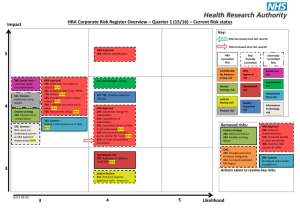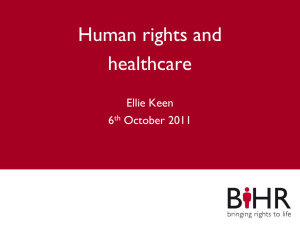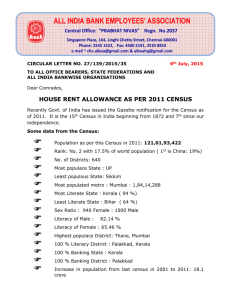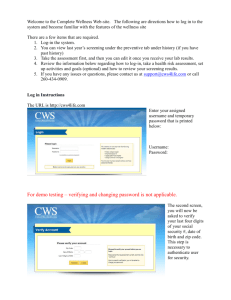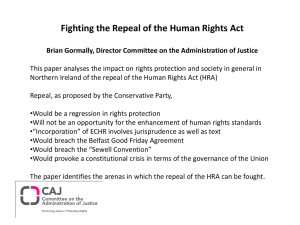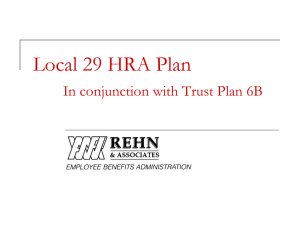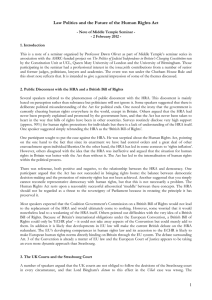doc - ACT Human Rights Commission
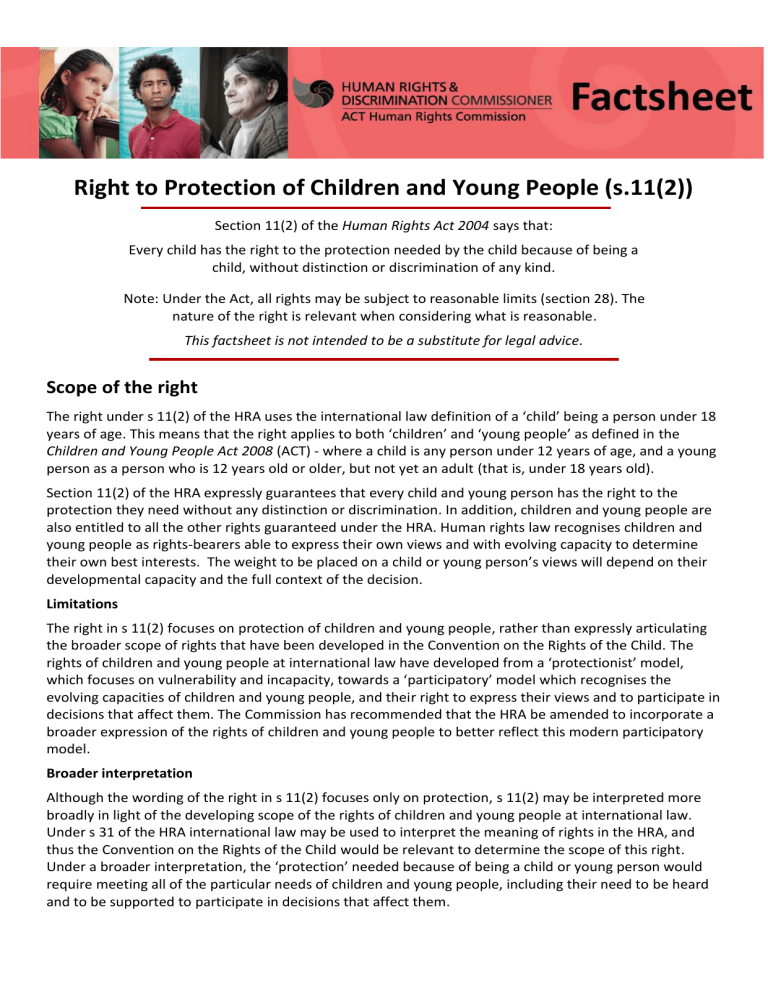
Right to Protection of Children and Young People (s.11(2))
Section 11(2) of the Human Rights Act 2004 says that:
Every child has the right to the protection needed by the child because of being a child, without distinction or discrimination of any kind.
Note: Under the Act, all rights may be subject to reasonable limits (section 28). The nature of the right is relevant when considering what is reasonable.
This factsheet is not intended to be a substitute for legal advice.
Scope of the right
The right under s 11(2) of the HRA uses the international law definition of a ‘child’ being a person under 18 years of age. This means that the right applies to both ‘children’ and ‘young people’ as defined in the
Children and Young People Act 2008 (ACT) - where a child is any person under 12 years of age, and a young person as a person who is 12 years old or older, but not yet an adult (that is, under 18 years old).
Section 11(2) of the HRA expressly guarantees that every child and young person has the right to the protection they need without any distinction or discrimination. In addition, children and young people are also entitled to all the other rights guaranteed under the HRA. Human rights law recognises children and young people as rights-bearers able to express their own views and with evolving capacity to determine their own best interests. The weight to be placed on a child or young person’s views will depend on their developmental capacity and the full context of the decision.
Limitations
The right in s 11(2) focuses on protection of children and young people, rather than expressly articulating the broader scope of rights that have been developed in the Convention on the Rights of the Child. The rights of children and young people at international law have developed from a ‘protectionist’ model, which focuses on vulnerability and incapacity, towards a ‘participatory’ model which recognises the evolving capacities of children and young people, and their right to express their views and to participate in decisions that affect them. The Commission has recommended that the HRA be amended to incorporate a broader expression of the rights of children and young people to better reflect this modern participatory model.
Broader interpretation
Although the wording of the right in s 11(2) focuses only on protection, s 11(2) may be interpreted more broadly in light of the developing scope of the rights of children and young people at international law.
Under s 31 of the HRA international law may be used to interpret the meaning of rights in the HRA, and thus the Convention on the Rights of the Child would be relevant to determine the scope of this right.
Under a broader interpretation, the ‘protection’ needed because of being a child or young person would require meeting all of the particular needs of children and young people, including their need to be heard and to be supported to participate in decisions that affect them.
Use of the rights
The right of children and young people under s 11(2) will be relevant in a wide range of situations and must be taken into account by public authorities in making decisions or developing laws or policies that affect children and young people.
The Children & Young People Commissioner (CYPC) applies the right in s 11(2) in considering complaints against public authorities in relation to services for children and young people in the ACT, and advocates for Government agencies to consult with children and young people about issues that affect them.
The right under s 11(2) together with other human rights informed the analysis of the Human Rights &
Discrimination Commissioner’s (HRDC) 2005 Audit of the Quamby Youth Detention Centre. The HRDC and
CYPC also applied the right in their 2011 Review of the ACT Youth Justice System, which made many of recommendations to ensure that children’s rights were respected, including the need for evidence-based rehabilitation programs, use of detention as a last resort and greater safeguards in the use of strip searching and segregation.
The right was also relevant in assessing issues such as arrangements for visits and the program for women and children in the HRDC’s 2014 audit of the conditions of detention of women at the Alexander
Maconochie Centre.
The following are some case law examples from the ACT, Victoria and Europe:
In R v YL [2004] ACTSC 115 the Court refused to exercise coercive powers to compel a seven-year old child to enter court and give evidence against his will in an assault case, citing the right of the child to protection.
In A & B v Children’s Court of Victoria [2012] VSC 589 (5 December 2012) the Court held that a child who is mature enough to give instructions to a legal representative is entitled to give direct instructions; ‘maturity’ does not involve assumption based on age alone.
In A v the United Kingdom 95599/94 (23 September 1998), the European Court of Human Rights held that the State has a positive duty to protect people (particularly those who are young and vulnerable) from physical harm when such harm amounts to torture and cruel, inhuman or degrading treatment in section 10 of the HRA. The Court clarified that the severity of an act (and therefore whether is reached the Article 3 threshold) was in part based on the age of the victim.
In E v the United Kingdom, 33218/96 (26 November 2002), the Court held that ‘a failure to take reasonably available measures which could have had a real prospect of altering the outcome or mitigating the harm is sufficient to engage the responsibility of the State’. In ES v Slovakia, 8227/04
(15 September 2009) the Court extended this liability to cover not just inaction by individual social workers, but also procedures within the system that lead to inadequate protection.
Examples of when this right could be relevant in practice
The rights of children and young people under s11(2) should be considered whenever a public authority makes a decision or develops a law or policy that will affect children and young people. It is important in these situations for public authorities to consider how children and young people will be affected, and to ensure that they have an opportunity to be heard and for their views to be taken into account.
This will include decisions, laws or policies:
about services and programs for children and young people;
about where, and with who children and young people live, and who they can have contact with;
about public space, developments or infrastructure that will be used by children and young people now and in the future;
about offences and penalties that may affect children and young people (see related factsheet on s 22 of the HRA);
about addressing risks to children and young people and protecting them from harm, including family violence.
PH: (02) 6205 2222
TTY: (02) 6205 1666
WEB: www.hrc.act.gov.au
EMAIL: human.rights@act.gov.au
